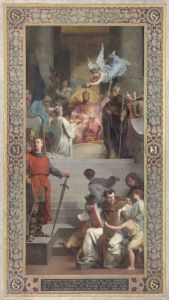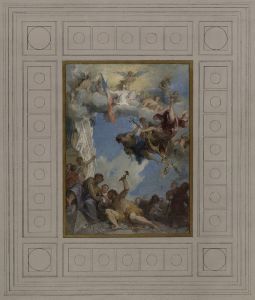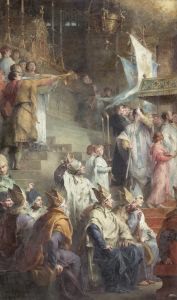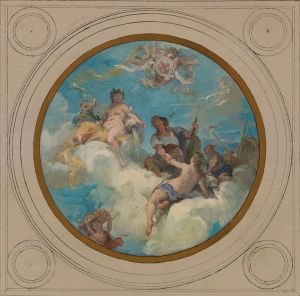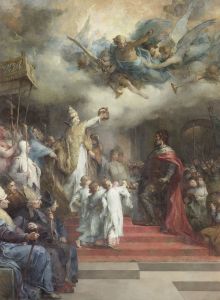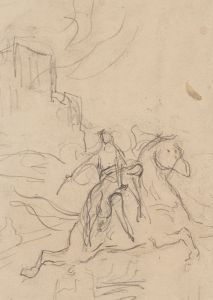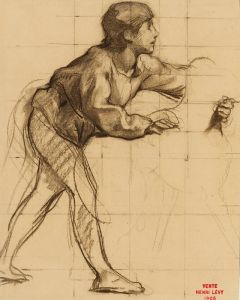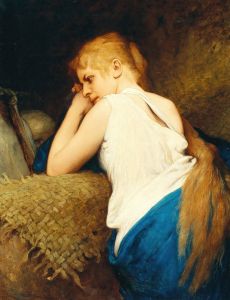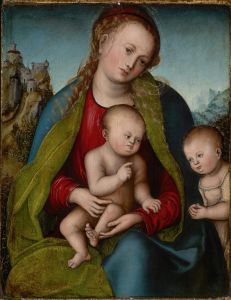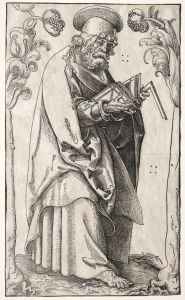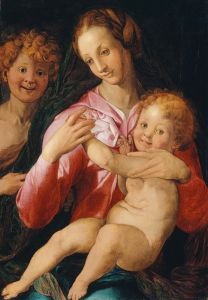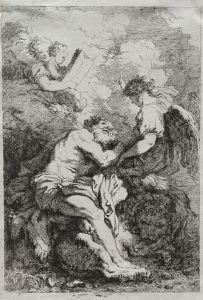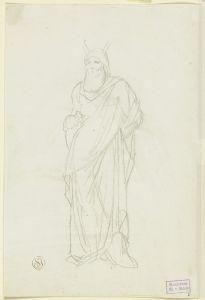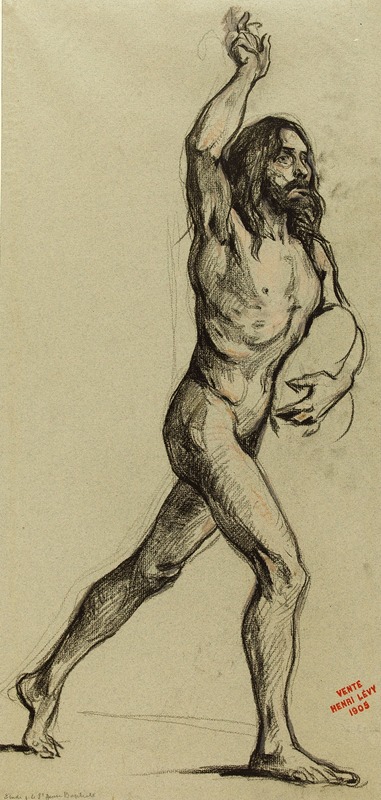
Etude pour Saint Jean-Baptiste
A hand-painted replica of Henri Leopold Lévy’s masterpiece Etude pour Saint Jean-Baptiste, meticulously crafted by professional artists to capture the true essence of the original. Each piece is created with museum-quality canvas and rare mineral pigments, carefully painted by experienced artists with delicate brushstrokes and rich, layered colors to perfectly recreate the texture of the original artwork. Unlike machine-printed reproductions, this hand-painted version brings the painting to life, infused with the artist’s emotions and skill in every stroke. Whether for personal collection or home decoration, it instantly elevates the artistic atmosphere of any space.
Henri Léopold Lévy was a French painter known for his works that often depicted religious and historical themes. One of his notable works is "Etude pour Saint Jean-Baptiste," which translates to "Study for Saint John the Baptist." This painting is an example of Lévy's skill in capturing the essence of religious figures through his detailed and expressive style.
Henri Léopold Lévy was born in 1840 in Nancy, France, and studied at the École des Beaux-Arts in Paris, where he was a student of François-Édouard Picot and Alexandre Cabanel. Lévy's work was heavily influenced by the academic art style of the 19th century, which emphasized classical techniques and often featured historical or mythological subjects. He exhibited regularly at the Paris Salon, where his works were well-received for their technical proficiency and emotional depth.
"Etude pour Saint Jean-Baptiste" is a preparatory study, which suggests that it was created as part of Lévy's process in developing a larger or more detailed work focused on the figure of Saint John the Baptist. Studies like this were common practice among artists, allowing them to explore composition, form, and lighting before committing to a final piece. Although specific details about the final work for which this study was intended are not readily available, the study itself provides insight into Lévy's artistic process and his approach to religious iconography.
The subject of Saint John the Baptist is a significant one in Christian art. John the Baptist is revered as a prophet who foretold the coming of Jesus Christ and is often depicted in art as a figure of asceticism and spiritual fervor. In Lévy's study, the focus would likely have been on capturing the intensity and spiritual presence of John the Baptist, a task that Lévy would have approached with his characteristic attention to detail and emotion.
Lévy's works are known for their dramatic use of light and shadow, which he employed to enhance the emotional impact of his subjects. This technique would have been particularly effective in a study of Saint John the Baptist, a figure often associated with themes of repentance and divine revelation. Lévy's ability to convey complex emotions through his use of color and composition is evident in his body of work, and "Etude pour Saint Jean-Baptiste" would have been no exception.
Throughout his career, Lévy received several accolades for his contributions to art, including being named a Chevalier of the Legion of Honor in 1876. His works are held in various collections, and he remains a respected figure in the history of French academic painting. While "Etude pour Saint Jean-Baptiste" may not be as widely known as some of his other works, it represents an important aspect of his artistic exploration and dedication to capturing the spiritual and historical narratives that defined much of his oeuvre.
In summary, "Etude pour Saint Jean-Baptiste" by Henri Léopold Lévy is a testament to the artist's skill in religious portraiture and his commitment to the academic art traditions of his time. Through this study, Lévy not only prepared for a larger work but also contributed to the rich tapestry of 19th-century religious art, leaving a legacy that continues to be appreciated by art historians and enthusiasts alike.





